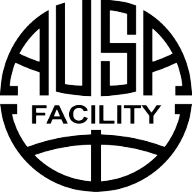Jumpers Knee
What is it?
Patellar tendinopathy, also known as jumper's knee, is a condition characterized by pain in the patellar tendon, which connects the kneecap (patella) to the shinbone (tibia). It is commonly seen in athletes who participate in sports that involve jumping, such as basketball and volleyball.
The primary symptom of patellar tendinopathy is pain in the front of the knee, especially when jumping or landing. The pain may be mild at first but can become more severe over time and may eventually limit the athlete's ability to participate in their sport.
Risk Factors / Signs?
There are several risk factors and contributing factors that can increase the likelihood of developing patellar tendinopathy. These can include:
Overuse: Repetitive jumping and landing, especially without proper technique, can put excessive stress on the patellar tendon, leading to pain and injury.
Training errors: Overtraining, sudden changes in training intensity or frequency, and inadequate rest and recovery can all contribute to the development of patellar tendinopathy. Changes in type of load as well as total volume is important so it’s not always related to how much you’re doing but what it is that you’re doing.
Muscle imbalances: Weakness or tightness in the muscles surrounding the knee, particularly the quadriceps and hamstrings, can put extra strain on the patellar tendon.
Previous Injury or deficits and inadequate rehab and recovery from other injuries, for example ankles sprains, low back pain, hip pain.
Management & how Physio can help?
Assessment of flexibility, mobility, strength, function & biomechanics.
Ensure an accurate diagnosis of your pain. Exercise’s and treatment for “Jumper’s Knee” can make other knee injuries feel worse for example patellofemoral pain so it’s important you’re treating the right thing.
Determine optimal loading (rest is not the answer, but load management is key!)
Improve strength deficits and kinetic chain strength
Progressive loading through isometrics, concentric & eccentric exercises, store & release (plyometrics), and sport specific conditioning.
Learn how to manage your symptoms. Know what to look out for.
Understand good and bad pain.
Maximise performance and reduce risk of the tendon getting worse.

